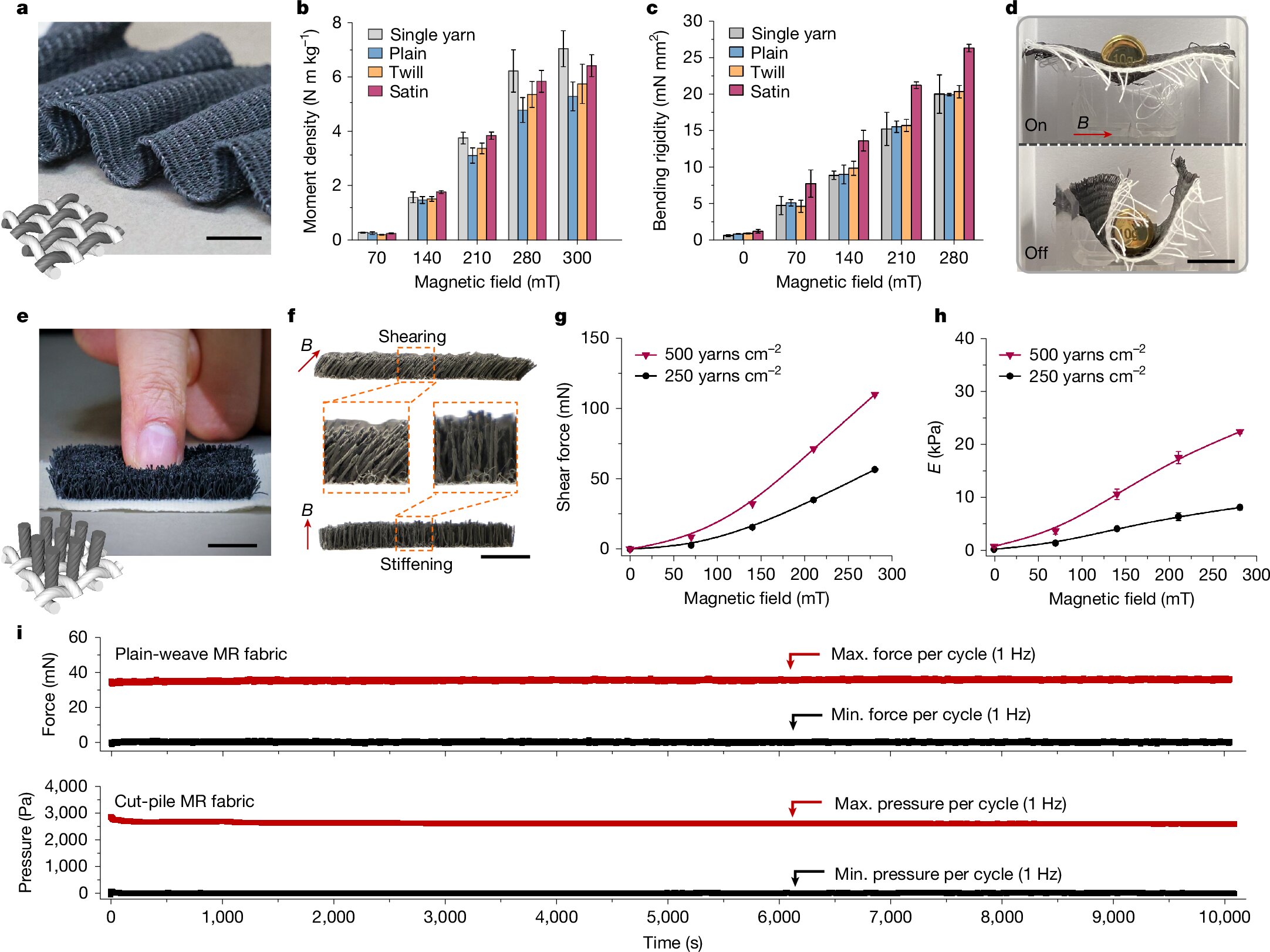Tech
CBRE charts rise of neocloud providers within European colocation market | Computer Weekly

The European colocation market is plugging the demand gaps for datacentre capacity caused by the waning appetites of hyperscale cloud firms by cozying up to neocloud providers, research from CBRE shows.
The real estate consultancy’s third quarter look at the state of the European datacentre market reveals that, despite a drop-off in hyperscaler demand for colocation capacity, the amount being acquired for hosting artificial intelligence (AI) workloads has soared.
The source of this demand are “neocloud” AI-infrastructure providers, such as Nscale and Coreweave, with CBRE’s figures showing the volume of datacentre capacity sold to such entities has trebled over the course of the past year.
“The volume of datacentre capacity sold to neocloud providers in the first nine months of the year rose to 414MW, up from 133MW compared to the same timeframe in 2024,” said the CBRE report.
While the report flagged London as being the location where the majority (68MW) of the 114MW of new datacentre supply that came online during the third quarter of 2025 was delivered, it also confirmed the Nordics as the most popular location for neocloud providers to take-up capacity.
“More than half of the signings’ volume (57%) is for capacity in Nordic countries, such as Norway and Iceland … [as] regional datacentre providers can offer neocloud providers … resource-intensive computer equipment, lower power costs and available capacity, which is increasingly difficult to find in Europe,” said the report.
Kevin Restivo, director of European datacentre research at CBRE, said power is often the greatest expense for AI infrastructure providers, so favouring the Nordics – where there is an abundance of lower-cost renewable power make sense.
“We see tremendous growth of this segment especially in the Nordics [for that reason], where lower-cost renewable power is often available in greater abundance than in many other European markets,” he said.
Market concerns
The meteoric rise of some neocloud providers has raised eyebrows in certain portions of the IT industry, with providers such as Nscale having risen to prominence seemingly overnight, having secured eye-watering amounts of outside investment.
As referenced in the CBRE report, the lack of history and track record some of these neocloud providers have has not gone unnoticed by the colocation community, with operators taking steps to mitigate the risks involved with doing business with them.
“Most European datacentre providers are accepting neocloud firms as tenants despite their considerable AI infrastructure requirements and short operational histories,” said CBRE. “Datacentre providers are taking measures to mitigate the additional risk take on by leasing capacity to neocloud firms. For example, higher rents are charged to account for the higher risk client and to help recover the considerable build costs incurred in building AI-ready datacentres. Rental deposits and parent company guarantees are sometimes asked of neocloud firms too.”
Andrew Jay, head of datacentre solutions for Europe at CBRE, said neocloud providers are also currying favour with colocation companies by “absorbing vacant space that was originally intended for hyperscalers”. As an example, the CBRE report referenced a case in February 2025 where a hyperscaler “halted talks” for datacentre capacity in Europe, leaving some operators with space to spare.
“It is a sign that many datacentre providers are growing more comfortable with the ambitions of neocloud providers and the covenants that come with it,” added Jay.
Tech
‘Energy sandwich’ could power next-generation solar and lighting

Researchers have achieved a new level of control over the atomic structure of a family of materials known as halide perovskites, creating a finely tuned “energy sandwich” that could transform how solar cells, LEDs and lasers are made.
Due to their remarkable ability to absorb and emit light, and because they are cheaper and can be configured to convert more of the solar spectrum into energy than silicon, perovskites have long been touted as a potential replacement for silicon in solar cells, LEDs and quantum technologies.
However, their instability and durability has, so far, largely limited perovskite devices to the laboratory. In addition, scientists have struggled to precisely control the thickness of perovskite films, and control how different perovskite layers interact when stacked together—an important step in building functional, multi-layered structures.
Breakthrough in perovskite film growth
Now, a team of researchers led by the University of Cambridge has found a new way to grow ultra-thin layers of perovskite films so their atoms line up perfectly, which could enable more powerful, durable and efficient devices.
The researchers used a vapor-based technique to grow three-dimensional and two-dimensional perovskites one layer at a time, which enabled them to control the thicknesses of the films down to fractions of an atom.
Their results, reported in the journal Science, could open the door to usable perovskite devices that can be produced at scale, using a process like that used to make commercial semiconductors.
Each layer in a semiconductor “sandwich” does a different job in moving electrons and their positively-charged counterparts—called holes—around and determines how the semiconductors absorb or emit light. Together, the layers act like one-way streets that guide the electric charges in opposite directions, preventing them from bumping back into each other and wasting energy as heat.
In other widely-used semiconductors, such as silicon or newer materials such as gallium nitride, the properties of the individual layers can be fine-tuned using various methods. But perovskites, despite their excellent performance, have so far proved difficult to control in layered devices, due in part to their ‘chaotic’ atomic structure.

Vapor processing enables atomic precision
“A lot of perovskite research uses solution processing, which is messy and hard to control,” Professor Sam Stranks from the Department of Chemical Engineering and Biotechnology, who co-led the research, said.
“By switching to vapor processing—the same method used for standard semiconductors—we can get that same degree of atomic control, but with materials that are much more forgiving.”
The researchers used a combination of three-dimensional and two-dimensional perovskites to create and control their atomically-tuned stacks, a phenomenon known as epitaxial growth. This fine control let the team directly observe how the light given off by the material changes depending on whether it’s a single layer, a double layer, or thicker.
“The hope was we could grow a perfect perovskite crystal where we change the chemical composition layer by layer, and that’s what we did,” said co-first author Dr. Yang Lu from Cambridge’s Department of Chemical Engineering and Biotechnology and Cavendish Laboratory.
“It’s like building a semiconductor from the ground up, one atomic layer after another, but with materials that are much easier and cheaper to process.”
Controlling charge behavior and device potential
The researchers also found they could engineer the junctions between the layers to control whether electrons and holes stayed together or apart—a key factor in how efficiently a material emits light.
“We’ve reached a level of tunability that wasn’t even on our radar when we started,” said Professor Sir Richard Friend from the Cavendish Laboratory, who co-led the research.
“We can now decide what kind of junction we want—one that holds charges together or one that pulls them apart—just by slightly changing the growth conditions.”
The researchers found they could tune the energy difference between the layers by more than half an electron volt, and in some cases, extend the lifetime of electrons and holes to over 10 microseconds: far longer than usual.
The team says this level of precision could pave the way for scalable, high-performance devices that use light in new ways, from lasers and detectors to next-generation quantum technologies.
“Changing the composition and performance of perovskites at will—and probing these changes—is a real achievement and reflects the amount of time and investment we’ve made here at Cambridge,” said Stranks.
“But more importantly, it shows how we can make working semiconductors from perovskites, which could one day revolutionize how we make cheap electronics and solar cells.”
More information:
Yang Lu et al, Layer-by-layer epitaxial growth of perovskite heterostructures with tunable band offsets, Science (2025). DOI: 10.1126/science.adx5685. www.science.org/doi/10.1126/science.adx5685
Citation:
‘Energy sandwich’ could power next-generation solar and lighting (2025, November 13)
retrieved 13 November 2025
from https://techxplore.com/news/2025-11-energy-sandwich-power-generation-solar.html
This document is subject to copyright. Apart from any fair dealing for the purpose of private study or research, no
part may be reproduced without the written permission. The content is provided for information purposes only.
Tech
British Churches Are Putting Their Faith in Heat Pumps

In many churches, often strapped for cash, the switch to a heat pump may be borne from necessity. Staff at St. Peter Mancroft Church in Norwich, which already had solar panels, opted to make the jump to a heat pump system when one of their old gas boilers failed.
“The church decided this was a good time to try and commit to it,” says Nicholas Jackson, from architectural design firm Nicholas Vanburgh Ltd. Jackson is also a fabric officer for the church. Last year, two table-like, upward-facing air source heat pumps were installed in a small yard next to the 15th-century building. These connect to an Edwardian cast iron radiator system, and the heat pumps are currently running at a COP of 4.
The church also opted for a battery storage system. Jackson says he’s still unsure of exactly how the heat pumps will cope during a really cold spell—one gas boiler remains as a backup.
“We were very blessed to be one of the early adopters on some of this stuff,” says Reverend Edward Carter, the vicar. He adds that within the church is an “Earth Chapel,” intended to focus Christian minds on the importance of the environment. “We’re trying to say something to the City of Norwich here, and maybe to the wider world,” says Carter.
Churches are far from the only community-centric buildings in the UK currently reengineering how they do things. Village halls, covered markets, and public transport hubs are also, in some cases, putting in solar panels, LED lighting, and electric-powered heating systems.
For certain believers, though, the spiritual component of decarbonization is key. There’s something deeper at work here, and perhaps enthusiasm like this could accelerate society’s broader transition towards cleaner technologies. Knott’s opinion is that Christians should be motivated, by scripture itself, to look after the planet.
“We’re not jumping on the bandwagon,” he says. “This has been a message for 2,000 years.”
Tech
Novel smart fabrics give robots a delicate grip

Robots aren’t always the most delicate of machines when handling fragile objects. They don’t have the lightness of touch of humans. But that could be about to change thanks to a new development in smart materials.
Researchers have developed a method for weaving flexible fibers that can be controlled by magnetic fields. Not only can this be used for robot hands to pick up objects like soft fruits, potato chips and worms, but it can also be used in a range of other applications. These include gloves that provide a realistic touch in virtual reality and breathable fabrics.
Creating a new smart fiber
In a paper published in the journal Nature, researchers detail how they created their smart textile, which can bend, stiffen or change its surface texture on demand. First, the team mixed tiny, soft magnetic particles (carbonyl iron) into extremely thin, flexible fibers of a polymer, LDPE (low-density polyethylene).
To overcome the challenge of making a fiber that is both thin and packed with magnetic materials, the researchers used a process called melt spinning. This high-speed technique allowed them to create fibers just 57 micrometers in diameter.
The next stage involved twisting seven of the fibers together into a helical yarn. The importance of this shape is that it can respond to a magnetic field from any direction. This is what truly sets it apart from other smart materials.
Instead of being limited to simple “on/off” reactions (like heating or stiffening when a voltage is applied), which is called scalar control, the helical shape provides the material with directional control. That means it can respond to the strength and direction of the magnetic field, which allows more sophisticated movements.
“Our work provides insights into stimuli-responsive fibrous materials, elevating them from scalar to sophisticated vector control, heralding an era of smart textile innovation,” wrote the researchers in their paper.
Real-world applications
The team created two types of fabrics from the yarn. A woven textile that is best for bending and stretching, and a cut-pile fabric that looks and feels like a soft brush. From the woven textile, they made a kind of fabric patch that automatically opens and closes tiny ventilation slits in response to a magnetic field cycling on and off. This could be used to manage sweat and heat instantly.
With the cut-pile fabric, they built a soft robotic gripper. Because the thousands of magnetic fibers can individually stiffen and mold around objects, the gripper enables robots to safely and gently pick up delicate objects.
Additionally, the researchers made a virtual reality haptic glove. When you grab a virtual object, a remote magnetic field stiffens the fibers or presses them against your skin to simulate real-world tactile sensations.
Next up for the team is to improve the materials for commercial use, ensuring they are durable and safe for comfortable, everyday clothing.
Written for you by our author Paul Arnold, edited by Gaby Clark, and fact-checked and reviewed by Robert Egan—this article is the result of careful human work. We rely on readers like you to keep independent science journalism alive.
If this reporting matters to you,
please consider a donation (especially monthly).
You’ll get an ad-free account as a thank-you.
More information:
Junhong Pu et al, Vector-stimuli-responsive magnetorheological fibrous materials, Nature (2025). DOI: 10.1038/s41586-025-09706-4
© 2025 Science X Network
Citation:
Novel smart fabrics give robots a delicate grip (2025, November 13)
retrieved 13 November 2025
from https://techxplore.com/news/2025-11-smart-fabrics-robots-delicate.html
This document is subject to copyright. Apart from any fair dealing for the purpose of private study or research, no
part may be reproduced without the written permission. The content is provided for information purposes only.
-

 Business1 week ago
Business1 week agoGST rationalisation impact: Higher RBI dividend expected to offset revenue shortfall; CareEdge flags tax pressure – The Times of India
-

 Tech1 week ago
Tech1 week agoBlood Tests for Alzheimer’s Are Here
-

 Sports1 week ago
Sports1 week agoPeat wows in debut as Arizona beats No. 3 Florida
-

 Business1 week ago
Business1 week agoSetback for expatriates? Delhi HC upholds mandatory EPFO membership; what this means for foreign staff – The Times of India
-

 Fashion1 week ago
Fashion1 week agoBangladesh Bank allows foreign currency-taka swap facility for dealers
-

 Politics1 week ago
Politics1 week agoTrump links Republicans’ election setbacks to record US govt shutdown
-

 Tech1 week ago
Tech1 week agoZohran Mamdani Just Inherited the NYPD Surveillance State
-

 Tech1 week ago
Tech1 week agoThe AI Data Center Boom Is Warping the US Economy






